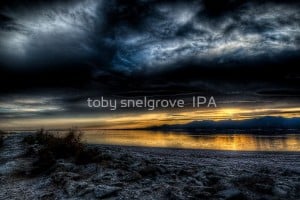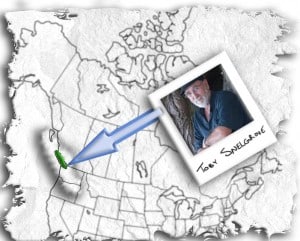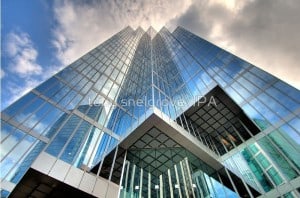Toby Snelgrove has been all over the photography spectrum and his extensive portfolio of impressive work proves it. Toby took a hiatus from photography for quite sometime, but thankfully started back up recently. It would have been a shame to give it up completely with such an incredible eye for a great HDR image, Toby knows one when he sees one. Thank you for returning to photography Toby! Be sure to check out his blog as well, he wrote a great piece about shooting from the hip!
What equipment do you use for your HDR process?
For image capture, I went Nikon a few years ago after Minolta was sold one more time – this time to Sony. I currently have a D-200 and D-300. The latter is my camera of choice due to two factors. First, D-300 CCD has a much lower noise level allowing much higher ISO settings. Secondly, the D-300 has a higher capture speed (frames/second). Both factors are important for me as I often do not have a tripod and have to shoot at higher shutter speeds to prevent layering problems (aligning the images) and blur (camera shake).
When I have my car or am in the mood to cart a tripod, I use a Manfrotto 055xPROB. It is light (aluminum) and is able to extend vertical (normal) or horizontal for extremely low shooting angles. I have different heads but prefer the Manfrotto 488rc4 ball head. For processing I use Photomatix. I experimented with PS-4 HDR option but never got the results I could achieve with Photomatix. I have not experimented with any other software.
Was there an image or artist that inspired you to start shooting in HDR?
About 3 years ago I was struck by Richard Shepherd’s images of abandoned buildings on Redbubble. They jumped out at me. I e-mailed him inquiring about his post processing. He referred to HDR as if I knew all about it (i.e.it was obvious) and he spent more time talking about other post-processing techniques. I instantly searched the web for HDR software. Within a week I was experimenting with PS-3 and Photomatix. Like you, it changed my approach to photography. Consequently, it is a major focus for my work. HDR allows you to actually “paint” with photography. It allows you to express to the viewer the shape and design in both the beautiful and the disregarded. I did a show in August of 2009 with 12, 28×38 framed prints. People were blown away. I knew that I had found something that did to others what Richard’s images did to me – it made seeing the world just a little more interesting.
Y ou really push the envelope on those dark skies, and they look great! How do you manage the normal noise that is created during the HDR process?
ou really push the envelope on those dark skies, and they look great! How do you manage the normal noise that is created during the HDR process?
Most of the time I do not have a problem with the noise. This was one example. However, you are right … it can creep in. Sometimes, it is just by watching the tonal mapping process and zooming in as you process catching the distortions. Other times, I use Topaz De-noise or even Lightroom’s De-noise. Sometimes, I just forget it. I am far from a technical master with any of the image processing software including PS. I fiddle and fart around attempting to craft the image as I want it seen. Sometimes, I just trash the image when I just can’t make it work right or when it is too noisy.
The Salton Sea Sunset was a challenge. It was a hand-held capture. Since three non-photographers were waiting for me and it was the end of a long day (through Joshua Tree National Park), I was in a rush. I had talked them into one last adventure “You must see the Salton Sea!” The truth was I saw a potential image. The ISO was 400 and that greatly reduces the noise and I could shoot at f/7 at 1/800 + & – 2 stops. The two under exposed images captured the dark end of the clouds and with Photomatix I worked on the White and Black points to create that effect.
Earlier in a side discussion you agreed that HDR has changed your photographic life. Can you go into that a little more, what major effects have HDR had on your photography?
I am a photojournalist at heart. I spent 3 years as a part-time scruffy newspaper photographer back in the 80’s (I am a psychologist by profession). I did everything from running shoe ads to soft news. What mattered to me then was to get people to notice “life” – whether it be to raise social consciousness or simply to get people to look at the beauty in what surrounds us. And I find beauty in pretty much anything.
For example, I did a show last spring entitled “The Ferry: A different point of view” . The whole idea was to get people who ride the ferry a lot (we live on an island in BC) to take notice of the shapes and designs all around them. The images included ceilings, sitting areas, winches, etc. Following the show I had numerous people come up to me and tell me how it changed how they not only see the ferry but also how they see the world. Now, that was even sweeter than the 4 images I sold. Also, I won an award this year at the Sidney Fine Art Show with my image of a dead tree near Mecca, CA. Yes, a dead tree. However, with those ominous clouds and fine detail in the dead wood, it was a natural for HDR. It worked.
So HDR has given me essentially a way to paint with photography. Now, you must have an “eye” to capture subjects in an artistic fashion. I have seen too many HDR images that just suck – they are using the technique to get your attention but the framing, content, or layout are not there. I have to admit, I have had a few of those myself – we all can get carried away. However, for someone who wants to push the artistic side of photography, HDR is one fine option.
Anything you would like to add? The blog floor is yours!
HDR sometimes just doesn’t get the effect I want. I have found Topaz Adjust to be a variation on the similar theme – painting with photography. For example, I prefer Topaz Adjust for my character images especially of the elderly with all their character lines. My Image of Victor (http://tobysnelgrove.blogspot.com/2010/02/make-it-portrait.html) is an example. The HDR just was too much. Topaz Adjust did the job.
So, don’t let the technique drive your work. Rather, let it enhance some of the images you find … heavy on the “some”.
More ways than one to find more Tobography (I love that one man!):












